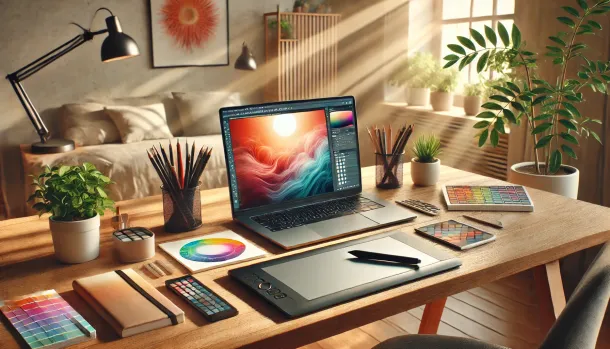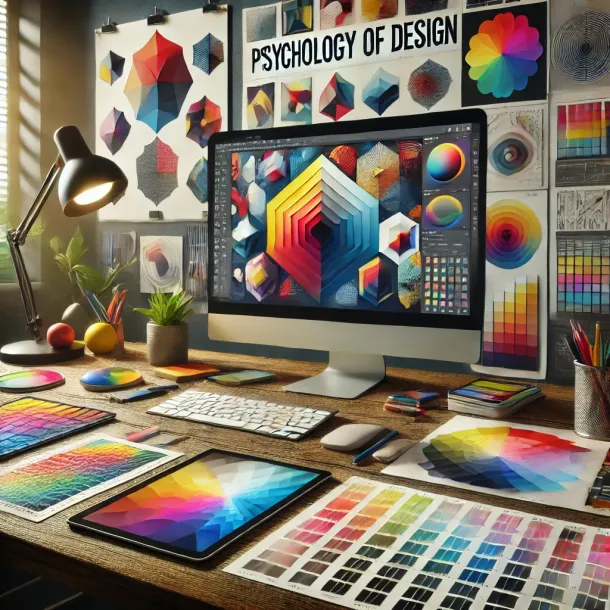Minimalism in Design: Less is More
Minimalism in Design: Less is More
Minimalism is more than just a design trend; it’s a philosophy that has influenced various forms of art, architecture, and lifestyle for decades. Rooted in the idea that simplicity and clarity lead to greater impact, minimalism in design embraces the concept of “less is more.” By stripping away unnecessary elements, minimalist design focuses on the essential, creating powerful, efficient, and aesthetically pleasing outcomes. This article explores the principles of minimalism in design, its benefits, and how to effectively implement a minimalist approach in your work.
The Origins of Minimalism
Minimalism as a concept emerged in the post-World War II era, particularly in the 1960s and 1970s, as a reaction against the excesses of abstract expressionism. It began in the visual arts and spread to other disciplines, including design, architecture, and even lifestyle choices. The minimalist movement was characterized by a return to basics, emphasizing simplicity, functionality, and the use of space.
In design, minimalism was influenced by movements such as Bauhaus and De Stijl, which advocated for form following function and the use of geometric shapes, clean lines, and a limited color palette. These principles have endured and continue to shape modern design practices.
Core Principles of Minimalist Design
Minimalist design is governed by a set of core principles that guide the creative process. These principles help designers create work that is both functional and aesthetically pleasing while avoiding unnecessary complexity.
1. Simplicity
At the heart of minimalist design is simplicity. This principle involves removing all non-essential elements from a design, leaving only what is necessary to achieve the intended purpose. Simplicity does not mean boring or plain; rather, it means focusing on the core message or function and delivering it in the most straightforward way possible.
2. Functionality
Minimalist design prioritizes functionality above all else. Every element in a minimalist design serves a specific purpose, and there is no room for decoration or embellishment that does not contribute to the overall function. This principle ensures that the design is user-centered and efficient, providing a seamless experience for the user.
3. Clean Lines and Geometry
Clean lines and geometric shapes are fundamental to minimalist design. These elements create a sense of order and structure, making the design appear more organized and coherent. Geometric shapes, such as squares, circles, and triangles, are often used to create visual balance and harmony.
4. Limited Color Palette
Minimalist designs typically use a limited color palette, often consisting of neutral colors like black, white, and gray. Occasionally, a single accent color may be used to draw attention to a specific element or create contrast. The use of a restricted color scheme helps to create a cohesive and uncluttered look.
5. Use of Negative Space
Negative space, or white space, is the area around and between the elements of a design. In minimalist design, negative space is just as important as the elements themselves. It provides breathing room, enhances visual clarity, and helps to emphasize the most important parts of the design.
The Benefits of Minimalist Design
Adopting a minimalist approach to design offers several benefits, both for the designer and the end-user. These benefits include improved user experience, enhanced aesthetics, and increased efficiency.
1. Improved User Experience
Minimalist design is inherently user-focused. By eliminating unnecessary elements, minimalist designs are easier to navigate and understand. Users can quickly find the information they need without being distracted by clutter or overwhelmed by too many choices. This leads to a more satisfying and efficient user experience.
2. Enhanced Visual Appeal
The clean, uncluttered look of minimalist design is aesthetically pleasing and timeless. The use of simple shapes, limited colors, and negative space creates a sense of elegance and sophistication. Minimalist designs often appear modern and fresh, making them attractive to a wide audience.
3. Increased Efficiency
Minimalist design is efficient in both creation and execution. By focusing on the essentials, designers can work more quickly and with greater precision. Additionally, minimalist designs are often more adaptable and scalable, making them easier to maintain and update over time.
Implementing Minimalism in Your Design Work
Transitioning to a minimalist design approach requires a shift in mindset and a commitment to simplicity and functionality. Here are some practical tips for implementing minimalism in your design work:
1. Start with a Clear Purpose
Before you begin designing, clearly define the purpose of your project. What message do you want to convey? What action do you want the user to take? By having a clear purpose in mind, you can focus on what is truly important and avoid adding unnecessary elements.
2. Focus on Content
In minimalist design, content is king. The content should be the focal point of your design, with all other elements serving to support and enhance it. Use typography, layout, and color to highlight the content and make it easy to read and understand.
3. Embrace Negative Space
Don’t be afraid to leave areas of your design blank. Negative space is a powerful tool in minimalist design, helping to create balance and focus. Use negative space to separate elements, guide the user’s eye, and create a sense of calm and order.
4. Choose a Simple Color Palette
Stick to a limited color palette, using neutral tones and a few accent colors. This helps to create a cohesive look and prevents the design from becoming too busy. Use color strategically to draw attention to key elements or create visual interest.
5. Simplify Navigation
In web design, minimalist navigation is key to a smooth user experience. Simplify menus, reduce the number of links, and make navigation intuitive. Users should be able to find what they’re looking for quickly and easily, without getting lost in a maze of options.
6. Use High-Quality Visuals
In minimalist design, every element counts, so it’s important to use high-quality visuals. Whether it’s a photograph, illustration, or icon, ensure that your visuals are sharp, relevant, and contribute to the overall design. Avoid using decorative images that do not serve a specific purpose.
7. Iterate and Refine
Minimalism is about refinement and precision. Don’t be afraid to iterate on your design, removing elements that aren’t necessary and fine-tuning the details. The goal is to achieve a balance between simplicity and functionality, ensuring that the design is both effective and beautiful.
Examples of Minimalism in Design
To better understand the power of minimalism, let’s look at some examples of minimalist design in different fields.
1. Apple’s Product Design
Apple is a prime example of minimalist design in the tech industry. From the sleek, simple lines of its hardware to the clean, intuitive interfaces of its software, Apple’s products embody the principles of minimalism. The use of white space, limited color palettes, and clean typography create a sense of elegance and ease of use, making Apple products both functional and aesthetically pleasing.
2. Google’s Search Page
Google’s search page is another excellent example of minimalism in web design. The page features a simple layout with a search bar at the center, surrounded by ample white space. There are no distractions, and users can focus solely on entering their search query. This minimalist approach has contributed to Google’s reputation for simplicity and efficiency.
3. MUJI’s Branding
MUJI, a Japanese retailer, is known for its minimalist approach to branding and product design. The company’s products feature simple, functional designs with a focus on quality and usability. MUJI’s branding reflects this philosophy, with clean lines, neutral colors, and minimal text used across its packaging, advertising, and retail spaces.
The Future of Minimalism in Design
As digital experiences continue to evolve, minimalism remains a relevant and influential approach to design. The future of minimalism will likely see a continued focus on functionality and user experience, with an emphasis on creating designs that are not only beautiful but also highly effective.
With the rise of new technologies, such as artificial intelligence and virtual reality, minimalist design will need to adapt to new mediums and user expectations. However, the core principles of simplicity, functionality, and clarity will continue to guide designers in creating work that resonates with users and stands the test of time.
Conclusion
Minimalism in design is about more than just reducing clutter; it’s about creating work that is purposeful, functional, and aesthetically pleasing. By focusing on the essentials and eliminating the unnecessary, minimalist design allows for greater clarity, efficiency, and impact.
Whether you’re designing a website, a product, or a brand, adopting a minimalist approach can help you create work that is both beautiful and effective. As you continue to refine your design skills, remember that less truly is more, and that the power of minimalism lies in its ability to communicate with simplicity and elegance.


